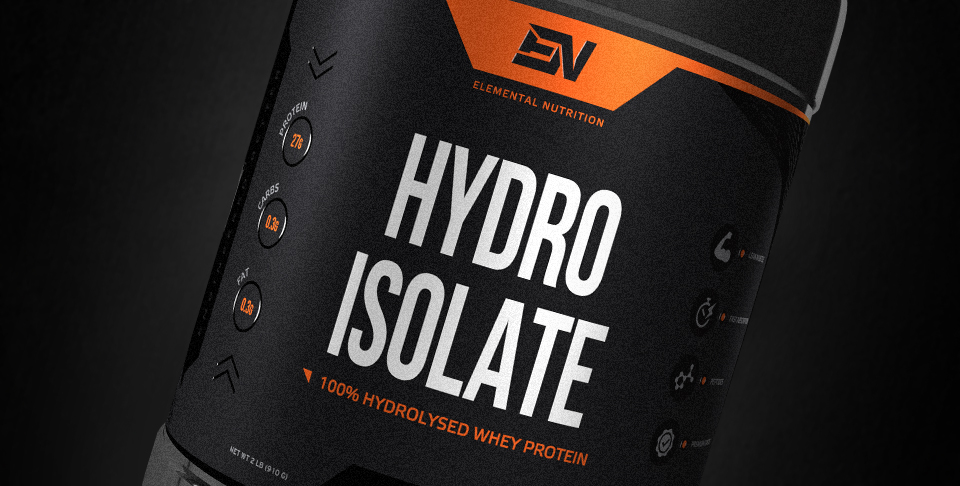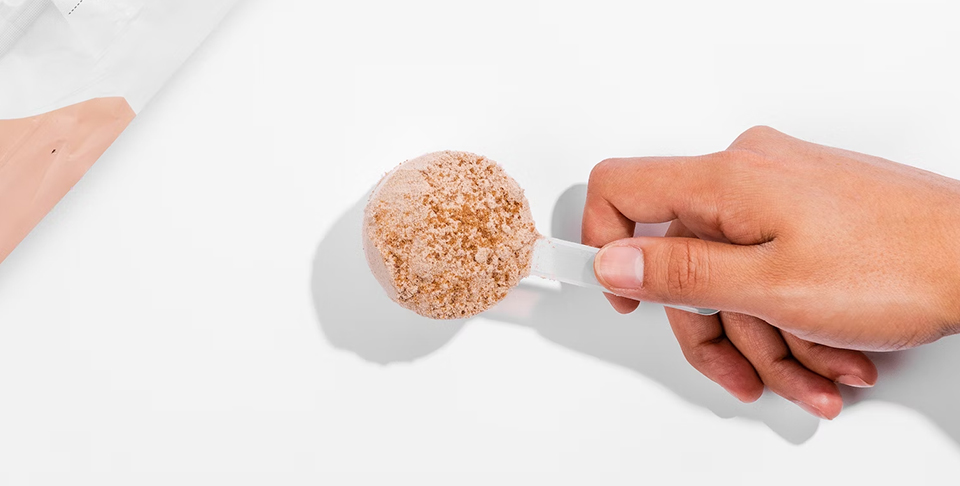 WPI Vs Hydrolyzed WPI: A Short Summary
WPI Vs Hydrolyzed WPI: A Short Summary
- Whey protein is a high-quality protein supplement derived from cow's milk, popular among bodybuilders.
- WPIs (whey protein isolates) are quickly digested, allowing for rapid amino acid uptake.
- Hydrolyzed & non-hydrolyzed whey proteins both offer high-quality protein.
- WPI & HWPI have minimal lactose, making them suitable for lactose-intolerant individuals.
- Advanced processing technologies can further enhance WPIs.
- Manufacturing WPIs involves microfiltration, resulting in all protein fractions being retained.
- Ion-exchange WPIs contain lower levels of fat & lactose but may lose some amino acids & nutrients.
- Hydrolyzed WPI (HWPI) is easily digested, with peptide fractions being absorbed faster than other protein sources.
- HWPI stimulates anabolic activity & muscle recovery, making it ideal for trainers.
- Combining WPI with glutamine may enhance muscle recovery & prevent muscle breakdown post-exercise.
- Hydrolyzed WPI, non-hydrolyzed ion-exchange whey protein, & cross-flow microfiltration whey protein have subtle differences.
- Hydrolyzed whey protein is generally considered the best choice for pre or post-workout supplementation.
Whey Protein: Why it is Important For Bodybuilders & Strength Athletes
Whey protein is produced from cow’s milk and represents the highest quality protein supplement. Its constituent amino acids; the building blocks of muscle tissue; make it a highly regarded supplement by bodybuilders, strength athletes or recreational gym junkies. The higher its protein content, the lower the fat, lactose and cholesterol, which are generally minimal anyway.
WPI & Hydrolyzed WPI: Needed for Bodybuilders
WPI is rapidly digested, allowing for the fast uptake of amino acids. Whey protein can either be hydrolysed, where the protein chains have been broken into smaller segments called peptides, or non-hydrolysed. Both forms provide high-quality protein. Whey protein isolate is a pure form of whey protein that has had almost all its lactose removed. This product may be useful for individuals who are lactose intolerant.2 During processing and purification virtually all fat, lactose and other impurities are removed to produce extremely pure and fast-acting whey protein isolates. WPIs can be further enhanced using advanced processing technologies of ultrafiltration and controlled ion-exchange to separate out functional protein fractions. The resulting WPIs can then be fortified with specific protein elements or ‘fractions’ to boost their functional activity. WPI provides a fast and sustained source of peptide fractions to ensure maximum uptake at receptor sites of trained muscles.
Manufacturing Whey Protein Isolates For Athletes
Whey protein isolate is made from milk during the cheese manufacturing process. It is then processed by microfiltration where it is filtered through special membranes under low temperature and pressure. Only soluble protein passes through the membrane, while fat and denatured proteins are withheld. It is then dried into powder form. This chemical-free process results in a WPI that contains all of the individual protein fractions of the whey protein matrix. Ion-exchange involves the use of hydrochloric acid and sodium hydroxide to separate proteins on an electrical charge basis. Chemicals used in this process mean that some amino acids and nutrients are lost. The WPIs resulting from this methodology contain lower levels of fat and lactose.
Hydrolysed WPI/Hydrosolates: Feeding Muscle Growth
A hydrolysate is a protein that has been broken down into its constituent amino acids. This type of protein can be more expensive, and some may have a bitter taste. As a result, a hydrolysed whey protein is more easily digested and presents less potential for allergic reactions than non-hydrolysed whey protein, because hydrolysis breaks down the protein chains down into smaller segments called peptides. The quality of protein, however, remains very high.3 Hydrolysed WPI (also known as HWPI) is produced by treating purified whey protein with enzymes that split peptide bonds of the whey protein structure. The process is carried out in a non-acidic environment, giving an extremely high-quality hydrolysed protein, with a cleaner taste and optimum absorption. The resulting WPI contains highly bioactive peptide fractions that help stimulate anabolic activity and muscle recovery. The peptide fractions are absorbed faster and reach muscle cell sites quicker than free-form amino acids and all other protein sources including standard whey protein isolate. This is good news for trainers who want fast-acting protein for maximum muscle recovery and growth.
WPI + Glutamine: A Great Mix for Enhanced Recovery
Immediately after exercise your body will attempt to increase free glutamine levels in your blood to ensure nervous system and brain functions are not compromised. This is achieved by breaking down or catabolising protein from your skeletal muscle, particularly the muscle you have just trained. You can stop this breakdown by choosing a WPI with glutamine added. This will help your muscle to recover sooner, which ultimately leads to greater muscle gains.
WPI vs Hydrolyzed WPI: Which Protein Powder is Best?
Hydrolysed WPI, non-hydrolysed ion-exchange whey protein and cross-flow microfiltration whey protein all feature subtle differences in their amino acid profiles, fat content, lactose content, and ability to preserve glutamine.4 Depending on your taste, training aims and potential food tolerances, you can now find proteins that have been formulated with your needs in mind, without negative side effects that once existed. Ion-exchange proteins are derived from an older process, inferior to the micro/ultrafiltration process. Ideally, and whilst it is generally more expensive, should you want a powder generally regarded as the best for pre or post-workout, the recommendation is to use a hydrolysed whey protein. Hydrolyzed whey protein like WPI also has a fantastic amino acid profile yet allows even faster nutrient uptake into freshly-trained muscle cells when it is needed most.
WPI vs Hydrolysed Whey Isolate (HWPI): FAQs
- Q: What are the main differences between WPI and HWPI? A: WPI is a pure form of whey protein with minimal lactose, while HWPI is a hydrolyzed form of WPI with broken-down protein chains for faster absorption.
- Q: Is HWPI better for muscle recovery & growth compared to regular WPI? A: Yes, HWPI has faster absorption due to smaller peptide fractions, making it more effective for muscle recovery and growth.
- Q: Are there any differences in taste between WPI & HWPI? A: Some people may find HWPI to have a slightly bitter taste compared to regular WPI due to the hydrolysis process.
- Q: Can both WPI & HWPI be used by lactose-intolerant individuals? A: WPI & HWPI is generally suitable for lactose-intolerant individuals. Users that are ultra-sensitive to lactose though, may be best to use a plant-based protein powder.
- Q: Which one should I choose between WPI & HWPI for pre or post-workout supplementation? A: While both are effective, HWPI is generally considered the better choice for pre or post-workout supplementation due to its faster absorption rate.
WPI vs Hydrolyzed Whey Isolate: In Conclusion
In conclusion, both whey protein isolate (WPI) & hydrolyzed whey protein isolate (HWPI) offer high-quality protein sources for bodybuilders & athletes. While WPI is an excellent option due to its rapid digestion, slightly lower cost & minimal lactose content, HWPI stands out with its even faster absorption rate & enhanced muscle recovery properties. Ultimately, the choice between WPI & HWPI will depend on individual preferences, tastes, & specific training goals. However, for those seeking the best pre or post-workout protein supplement, hydrolyzed whey protein isolate is generally considered the superior option.
1 Nutrient Timing by John Ivy, Ph.D., and Robert Portman, Ph.D., p. 126
2 Ibid., p. 126
3 Natural Bodybuilding – a proven program for developing a winning physique by John Hansen, p. 102
4 Power Eating by Susan Kleiner, PhD, RD, p. 178
5 Devries, M. C., & Phillips, S. M. (2015). Supplemental protein in support of muscle mass and health: advantage whey. Journal of Food Science, 80(S1), A8-A15.
6 Hoffman, J. R., & Falvo, M. J. (2004). Protein - Which is best? Journal of Sports Science and Medicine, 3(3), 118-130.
7 Tang, J. E., Moore, D. R., Kujbida, G. W., Tarnopolsky, M. A., & Phillips, S. M. (2009). Ingestion of whey hydrolysate, casein, or soy protein isolate: effects on mixed muscle protein synthesis at rest and following resistance exercise in young men. Journal of Applied Physiology, 107(3), 987-992.
8 Cribb, P. J., & Hayes, A. (2006). Effects of supplement timing and resistance exercise on skeletal muscle hypertrophy. Medicine and Science in Sports and Exercise, 38(11), 1918-1925.
9 Morifuji, M., Kanda, A., Koga, J., Kawanaka, K., & Higuchi, M. (2010). Post-exercise carbohydrate plus whey protein hydrolysates supplementation increases skeletal muscle glycogen level in rats. Amino Acids, 38(4), 1109-1115.


